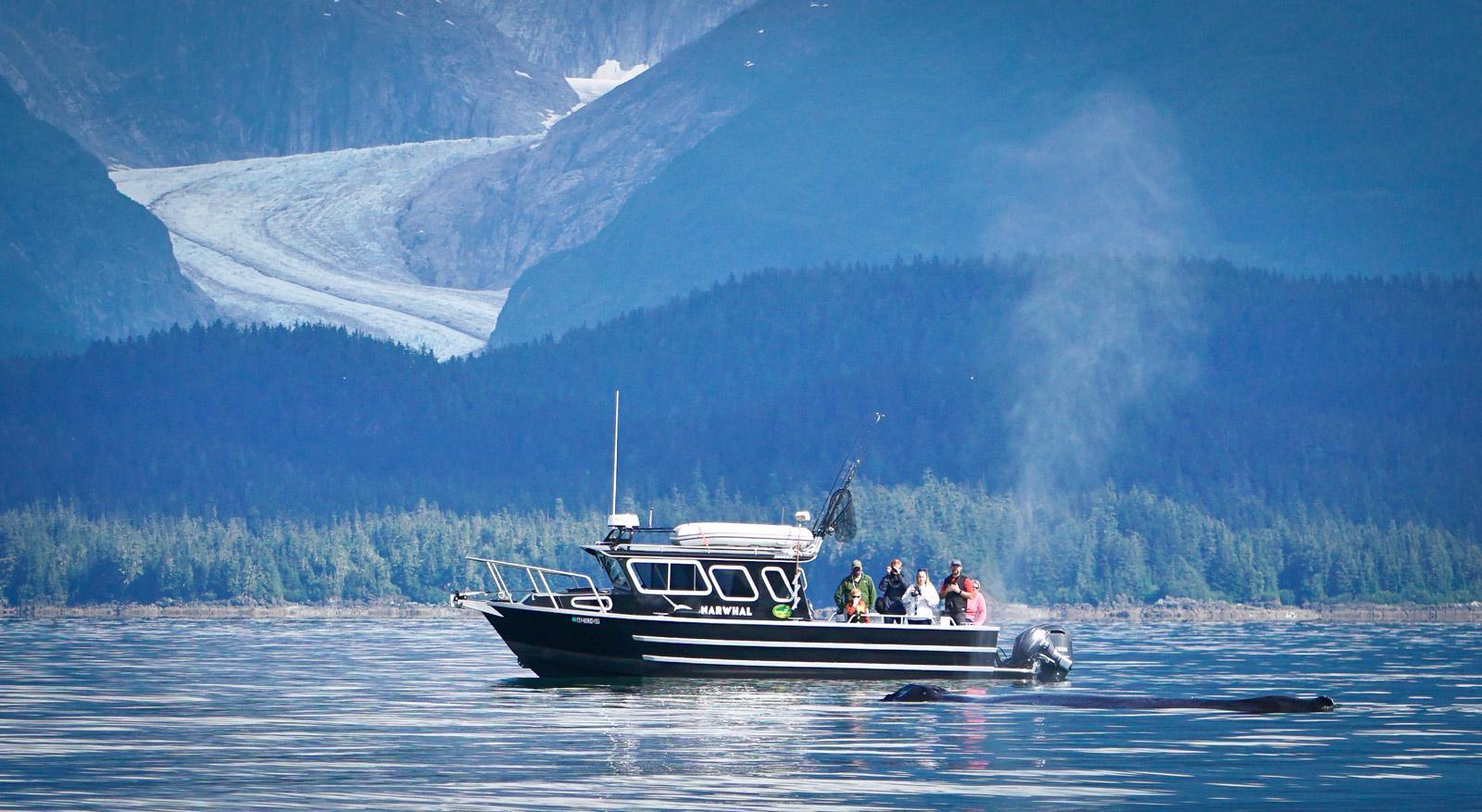Get the most out of your whale watch in Juneau:
Mention Alaska to most people and their mind is immediately drawn to a particular mental picture. Some imagine a sweeping wilderness vista of snow-capped mountains dissected by turquoise glaciers. Others picture powerful brown bears pouncing into creeks chasing salmon and still others imagine cruising the crystal clear waters of the inside passage in search of humpback whales and elusive orcas. Regardless of your expectations, you can never truly prepare yourself for the reality of Alaska’s emotional overwhelming beauty.
As a whale watching captain in Southeast Alaska, it’s my job to bring people out on the water to give them a memorable experience. In most cases it is their first interaction with the humpback whales. The rush of adrenaline that surges through your body when a 50ft/ 66,000 pound animal surfaces near the boat then exhales a fine plume of mist 20ft into the air is a moment you’ll never forget. That first encounter often moves people to tears of joy.
Before you arrive on your whale watch, there are a few things you can do to ensure you’ll have the best time possible. Here are my top 5 tips to ensure you maximize your next the whale watch.
1) Dress Appropriately
Yes, you will be on a cruise during the summer, but you are visiting Southeast Alaska and we live in the Tongass National Forest. That’s 16.7 million acres of temperate rain-forest, which is a lot of trees and they like the rain. Our average annual rainfall is 62 inches and average summer temp’s are in the mid/high 50’s. So be prepared. Dress in layers and bring a packable rain jacket, gloves (if your hands get cold) and a warm hat. It’s better to not need them, than wish you had them. If it’s sunny out adjust accordingly. Look up kinyradio.com as a solid source for accurate local weather.
2) Bring Binoculars
If you want to make sure that you get the best view possible of the humpback whales, then bring your own binoculars. I keep high quality binoculars on board for my passengers, but not all boats do. Having your own binoculars means that regardless of whether the whales are 400 yards away or cruising by the bow of your boat you’ll have the best view possible. Also please remember your captain is legally obligated, by federal law, to keep at least 100 yards from the whales. Sure the whales might come close, which is exciting, but the chances are you will be further away from them than you think.
3) Know Your Camera
The camera on your phone or iPad should be just fine for your whale watch, I use mine all the time. But be aware the camera on your phone is not going to get you “National Geographic” style photos, especially if the whales are over 100 yards away. If you’re looking to use a better camera here are a few tricks that’ll help you get the shot.
a) Rent don’t buy. If you don’t have a camera or lenses then rent them. Plenty of websites now rent camera gear by the week. That’s a great way to use expensive equipment without emptying your bank account.
b) If you own or rent, know how the camera works. I see frustrated people every day miss the photo they want because they aren’t familiar with their camera. Take time to shoot the camera at home.
c) Be patient. The whales are mammals. They come up to breathe regularly. So if you miss the shot of the whale’s fluke high in the air as it dives don’t get frustrated. The whale will be back again when it needs more air and you’ll get a second chance.
d) Remember that taking photos of marine mammals is hard. The professionals spend weeks sometimes months trying to get one shot. Any photo you get is special.
4) Manage Your Expectations
We all want to see whales breaching, killer whales cruising near the boat, sea lions jumping out of the water and humpbacks bubble net feeding. However, the reality is that these are relatively rare occurrences. So take the pressure off yourself and just enjoy the tour. You’re going to see whales (on my tour we offer a money back guarantee if you don’t). Whales are wild free-swimming sentient mammals. They are going about their daily business eating, socializing and being whales. The humpbacks in Southeast Alaska are very acrobatic…versus in Hawaii where they are breeding. While they are in Alaska they are focused on feeding. It doesn’t mean you won’t see a spectacular show. It just means they have other things on their minds.
5) Be Aware of ALL the Surrounding Area
Yes, you are out to see the whales but don’t forget to look at the scenery. The coastline of Southeast Alaska is a stunningly rugged mix of coastal mountains, islands and glaciers. It’s easy to get caught up anticipation, or what’s happening on the water and miss the beauty that is all around you. Take the opportunity to put the camera or binoculars down and absorb the scenery. It will blow your mind and you will remember these magical moments for years to come.

